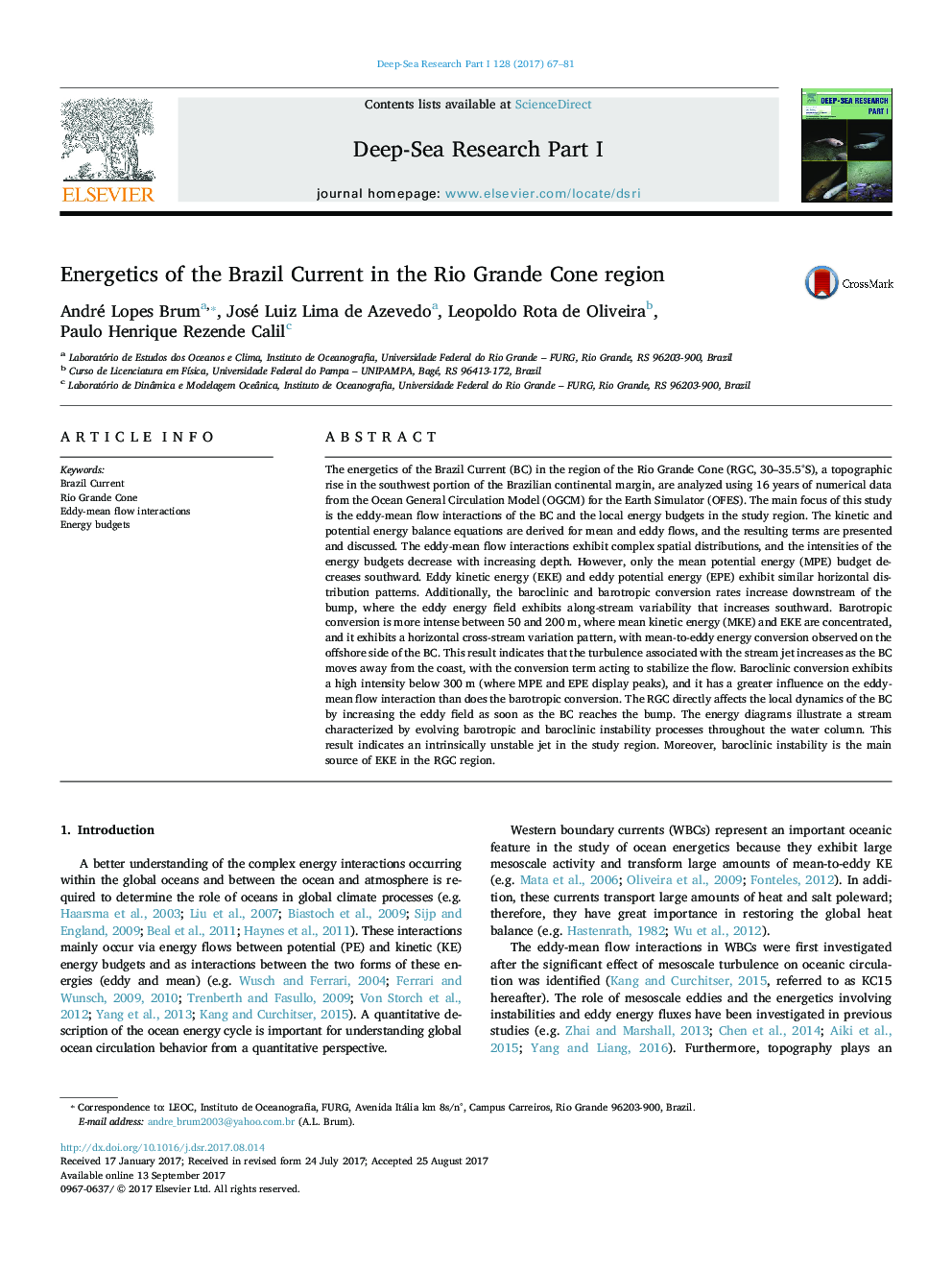| Article ID | Journal | Published Year | Pages | File Type |
|---|---|---|---|---|
| 5764608 | Deep Sea Research Part I: Oceanographic Research Papers | 2017 | 15 Pages |
â¢Baroclinic and barotropic conversion rates increase close to the Rio Grande Cone.â¢Baroclinic conversion has a greater influence on the local dynamics of the BC.â¢The MKE/EKE budget ratios along the transects are >1 at the three depths analyzed.â¢The main source of the EKE in the RGC region is via baroclinic instability.
The energetics of the Brazil Current (BC) in the region of the Rio Grande Cone (RGC, 30-35.5°S), a topographic rise in the southwest portion of the Brazilian continental margin, are analyzed using 16 years of numerical data from the Ocean General Circulation Model (OGCM) for the Earth Simulator (OFES). The main focus of this study is the eddy-mean flow interactions of the BC and the local energy budgets in the study region. The kinetic and potential energy balance equations are derived for mean and eddy flows, and the resulting terms are presented and discussed. The eddy-mean flow interactions exhibit complex spatial distributions, and the intensities of the energy budgets decrease with increasing depth. However, only the mean potential energy (MPE) budget decreases southward. Eddy kinetic energy (EKE) and eddy potential energy (EPE) exhibit similar horizontal distribution patterns. Additionally, the baroclinic and barotropic conversion rates increase downstream of the bump, where the eddy energy field exhibits along-stream variability that increases southward. Barotropic conversion is more intense between 50 and 200 m, where mean kinetic energy (MKE) and EKE are concentrated, and it exhibits a horizontal cross-stream variation pattern, with mean-to-eddy energy conversion observed on the offshore side of the BC. This result indicates that the turbulence associated with the stream jet increases as the BC moves away from the coast, with the conversion term acting to stabilize the flow. Baroclinic conversion exhibits a high intensity below 300 m (where MPE and EPE display peaks), and it has a greater influence on the eddy-mean flow interaction than does the barotropic conversion. The RGC directly affects the local dynamics of the BC by increasing the eddy field as soon as the BC reaches the bump. The energy diagrams illustrate a stream characterized by evolving barotropic and baroclinic instability processes throughout the water column. This result indicates an intrinsically unstable jet in the study region. Moreover, baroclinic instability is the main source of EKE in the RGC region.
